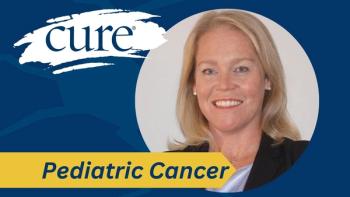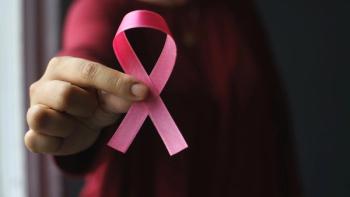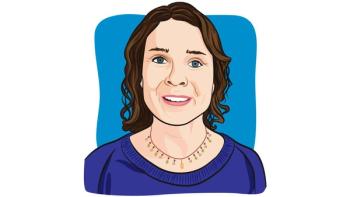
Durable Responses Continue with Keytruda Plus Chemoradiation in Previously Untreated Non-Small Cell Lung Cancer
After more than two years of follow-up, patients with previously untreated, locally advanced stage 3 non–small cell lung cancer continue to derive a benefit from treatment with Keytruda and chemoradiation.
Treatment with Keytruda (pembrolizumab) plus concurrent chemoradiation followed by Keytruda monotherapy continues to be effective after two years in patients with previously untreated, locally advanced stage 3 non–small cell lung cancer (NSCLC), according to updated study findings.
The updated study results from the KEYNOTE-799 trial (NCT03631784) — which were presented during the 2022 American Society of Clinical Oncology Annual Meeting — also showed that treatment with the study regimen led to two-year progression-free survival (percentage of patients alive without disease progression at a given timepoint) rates of 55.3% in patients with squamous and nonsquamous histology (cohort A) and 60.6% in patients with nonsquamous histology only (cohort B).
Moreover, the overall survival (percentage of patients alive with disease) rate at two years was 64.3% in cohort A and 71.2% in cohort B.
The typical standard of care for patients with unresectable, stage 3 NSCLC consists of concurrent chemoradiation followed by consolidation therapy with Imfinzi (durvalumab), according to the study authors.
Here, the investigators presented additional findings from the KEYNOTE-799 trial. Previous results from a primary analysis of the data with a cutoff date of Oct. 28, 2020, showed that cohort A (112 patients) had an overall response rate (percentage of patients whose disease partially or completely responded to treatment) of 70.5% and cohort B (102 patients) achieved an overall response rate of 70.6%. At the time of the primary analysis, a small proportion of cohort A (8.0%) and cohort B (6.9%) experienced serious or severe pneumonitis, an infection that causes the lung tissue to become inflamed.
The updated findings include an additional one-year of follow-up for all enrolled patients.
To be enrolled onto KEYNOTE-799, patients had to be aged 18 years or older, have stage 3A-C, unresectable, locally advanced, pathologically confirmed, previously untreated NSCLC. Patients were not permitted to have received prior systemic immunosuppressive therapy within seven days of enrollment. In total, 216 patients enrolled onto the trial, however only 214 received treatment.
Patients in cohort A (median age, 66 years) received 200 mg of Keytruda every three weeks (Q3W) plus 200 mg/m2 of paclitaxel Q3W and carboplatin AUC6 Q3W during the first cycle. From treatment cycles two to three, the cohort received the same dosage of Keytruda as well as 45 mg/m2 of paclitaxel once weekly (QW) plus carboplatin AUC2 QW and thoracic radiotherapy (60 Gy in 30-daily, 2-Gy fractions five days a week). This was then followed by 200 mg of Keytruda Q3W until cycle 17 was completed or disease progression, unacceptable side effects, illness that prevented further treatment or study withdrawal.
Cohort B (median age, 64 years) received a slightly different regimen. Patients in this cohort received Keytruda 200 mg Q3W plus pemetrexed 500 mg/m2 Q3W and 75 mg/m2 of cisplatin Q3W during cycle one. Cycles two to three consisted of the same treatments and doses with thoracic radiotherapy added to the regimen. And then for cycles four to 17, patients received 200 mg of Keytruda Q3W until the last cycle was completed or any occurrence that would result in treatment withdrawal.
With an added year of follow-up, the overall response rate in both overall patient populations increased slightly — 71.4% in cohort A and 75.5% in cohort B. In terms of overall response rate by cancer stage, patients with stage 3A NSCLC derived the most benefit — 73.2% in cohort A and 76.9% in cohort B.
Patients with an ongoing response to treatment dropped from 78.8% at 12 months to 64% at 24 months in cohort A. There was also a decrease in cohort B, but not as significant (74.8% vs 68.7%, respectively).
In terms of treatment-related side effects, 93.8% of cohort A and 97.1% of cohort B experienced an event at any severity.
“Pembrolizumab plus (concurrent chemoradiation therapy) followed by pembrolizumab represents a promising therapy for patients with previously untreated, locally advanced, stage 3 NSCLC,” the study authors concluded.
For more news on cancer updates, research and education, don’t forget to




